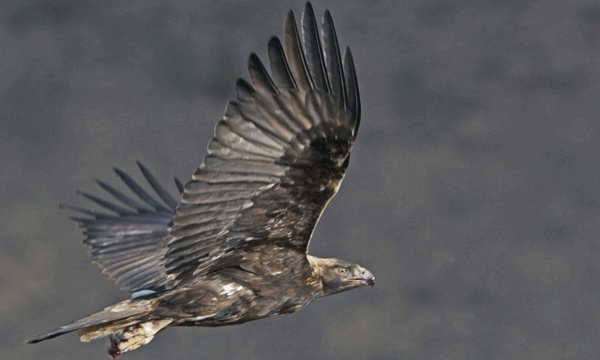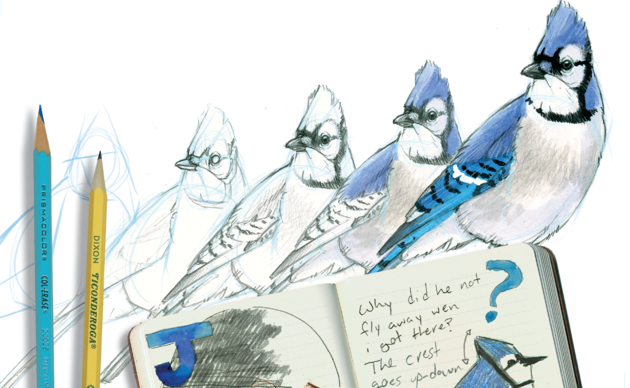Golden Eagle

The Golden Eagle is one of the largest and most agile raptors found in North America. Since the passing of the U.S. Bald and Golden Eagle Protection Act in 1962, it has been a protected species. The majestic Eagle lives in open grasslands from Modoc Plateau to the Mojave Desert. The dark brown bird with the golden sheen is especially distinct to California’s Alameda County. Despite their immense mass, Golden Eagles can fly up to 200 miles per hour. They perform swooping aerial gymnastics during courtship and play. This finesse and speed allow them to hunt all types of large prey; including: deer, other birds, goats, domesticated and wild cats, rabbits and other mammals.
Golden Eagles are monogamous and may mate for life. Their nests are very large and have been recorded being as much as 6 feet in diameter and can be found on cliffs, in trees, on the ground, windmills, and on towers. The birds have been known to return to the same nest for more than one fledgling attempt.
The Golden Eagle has strong ties to humans. Its image is used in many national symbols; including: Egypt, Mexico, Albania, Germany, Austria, and Kazakhstan. Native American and Five Nations people find the bird sacred. Golden Eagles are also the traditional bird used in falconry.
The open grasslands ideal for capturing wind are unfortunately the same habitat favored by the Eagle to hunt. Thousands of Eagles have been maimed, injured, and killed by the turbines used to generate wind energy, particularly in Altamont Pass. Audubon California is working with policy-makers on creating alternative energy solutions that provide a safe environment for these and other California birds. In late-2013, the Department of Interior published a rule that allows for the accidental killing of Golden Eagles.
In 2013, Audubon California helped pass legislation requiring the use of non-lead ammunition for all hunting, thus removing one of the most significant threats to the species.
Recent research indicates that the Golden Eagle is also at risk of losing a large portion of its range due to global warming.
How you can help, right now
Get Audubon CA in Your Inbox
Audubon California Newsletter comes to your inbox monthly with breaking news and important conservation updates from our state.
Donate to Audubon
Help secure the future for birds at risk from climate change, habitat loss and other threats. Your support will power our science, education, advocacy and on-the-ground conservation efforts.
Tell CA Assemblymembers to Act on Climate
Your advocacy helped save the California Condor. Tell your reps you want a climate bond to ensure the future of critical conservation efforts.




